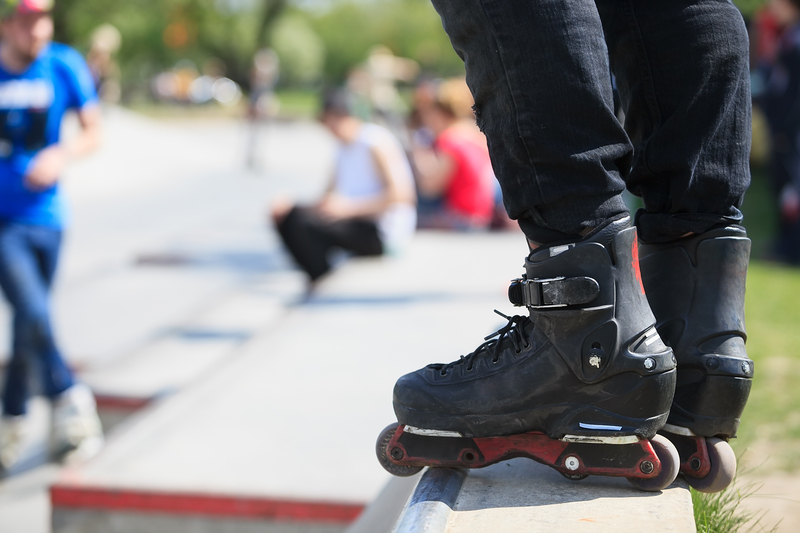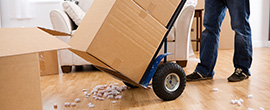Why Moving a Piano Is Best Left to the Experts
Posted on 29/05/2025
Why Moving a Piano Is Best Left to the Experts
When it comes to relocating to a new home or rearranging a music space, one of the most daunting challenges is moving a piano. Whether you own a classic grand, an elegant upright, or a digital masterpiece, your instrument is both valuable and vulnerable. While some people are tempted to turn piano moving into a DIY project, the risks far outweigh the perceived savings. In this comprehensive guide, we'll unravel why moving a piano should be entrusted to the professionals, highlight what goes into safe piano relocation, and offer tips for protecting your priceless instrument.

The Unique Challenges of Piano Moving
Pianos are complex, costly, and incredibly delicate musical instruments. From their intricate internal mechanisms to their beautiful exteriors, each piano presents a set of challenges that standard furniture simply doesn't.
Understanding Piano Construction
- Heavy and Bulky: Even small upright pianos can weigh hundreds of pounds, with concert grands tipping the scale at over 1,000 pounds.
- Fragile Interior Mechanisms: Inside a piano, there are thousands of finely tuned parts--strings, hammers, soundboards, and keys--that can be easily damaged by jostling or improper handling.
- Finished Exteriors: The veneer and finish of a piano are vulnerable to scratches, cracks, and moisture.
Moving a piano is more than lifting and shifting; it requires nuanced understanding, specialized equipment, and skillful handling.
Piano Types and Moving Complexities
- Upright Pianos: These are generally easier to move due to their shape, but awkward weight distribution still makes them tricky.
- Grand Pianos: With extended legs and a wide body, grand and baby grand pianos require partial disassembly and expert reassembly.
- Digital Pianos & Organs: While lighter, they still have sensitive components and wiring that need protection.
Each type of piano must be approached with a different moving strategy, underlining the importance of experience and expertise.
Risks of DIY Piano Moving
While saving money is always appealing, moving a piano without expert help can have disastrous consequences for both your instrument and your well-being.
Potential for Personal Injury
- Back Strain & Muscle Injuries: The sheer weight and awkward shape of a piano can cause serious injuries, even to strong adults.
- Crushing Hazards: Improper lifting techniques can lead to fingers, feet, or even entire bodies being caught under or between heavy piano sections.
- Slip & Trip Dangers: Navigating stairs, narrow hallways, and thresholds while carrying a piano increases the risk of falls.
Instrument Damage Risks
- Broken Legs or Pedals: A single misstep could snap off piano legs or pedals, requiring expensive repairs or replacements.
- Internal Malfunction: Jarring movements may warp the frame, break strings, or disrupt intricate internal mechanisms, affecting sound quality.
- Finish Scratches and Dents: The cosmetic appeal of your piano is easily marred by contact with walls, doorways, or moving straps.
Many homeowners who attempt to move their own pianos regret the decision after incurring damages that cost far more to repair than what professional movers would have charged.
Why Hire Professional Piano Movers?
Experienced piano movers and relocation experts deliver a level of care that ensures your instrument--and your premises--are fully protected during the move. Here's what they bring to the table:
Specialized Training and Experience
- Knowledge of Piano Anatomy: Experts understand how to disassemble, transport, and reassemble different piano types without risking damage.
- Route Planning: Professionals assess the safest paths in and out of your home, accounting for stairs, tight turns, and doorways.
- Team Coordination: Moving a piano is not a solo job. Movers work in coordinated teams with each member performing a specific role.
Appropriate Equipment and Tools
- Piano Dollies and Boards: Specialized tools distribute weight evenly, reducing strain on both the instrument and movers.
- Padded Blankets and Wraps: Professional movers use thick, protective coverings to shield pianos from scratches and bumps.
- Secure Strapping: Reinforced straps ensure the piano stays firmly in place on the dolly and in the moving vehicle.
Full Protection and Insurance
- Comprehensive Insurance: Professional moving companies offer insurance coverage to protect against rare mishaps or damages.
- Liability Coverage: If an injury occurs or if your property is damaged, you won't be left paying the costs out-of-pocket.
Efficient & Stress-Free Service
- Time Savings: Movers can handle the relocation quickly and with minimal disruption to your schedule.
- Piano Placement: Professionals precisely place your piano in its new location and assemble it to ensure it is level and ready for use.
The Step-by-Step Process of Professional Piano Moving
To fully appreciate the complexity, let's break down the typical process piano moving specialists follow:
1. Pre-Move Assessment
- Pre-inspection of both current and destination properties
- Identification of potential obstacles
- Measurement of doorways, hallways, and staircases
2. Preparation and Partial Disassembly
- Securing moving paths and protecting floors with pads or runners
- Removing legs, pedals, and lyres from grand pianos
- Wrapping all detachable parts in cushioned blankets
3. Loading and Transportation
- Lifting the piano onto a skid board and securing it to a heavy-duty dolly
- Carefully maneuvering the instrument through narrow or tight spaces
- Securing the piano inside the truck to prevent shifting during transit
4. Unpacking and Placement
- Careful unloading at the destination
- Reassembly of any detached components
- Final placement and leveling of the piano in its new home
- Inspection for tuning needs after the move
Each step demonstrates why professionals are best equipped to move a piano safely.
Cost Considerations: Is Professional Piano Moving Worth It?
While professional piano relocation may seem costly upfront, the expenses are easily justified when you weigh them against the risks and potential losses. Let's explore why:
Cost of DIY vs. Professional Services
- Tool & Equipment Rental Fees: Renting heavy-duty dollies, padding, and straps can add up.
- Risk of Injury: Medical bills from moving injuries can be significant.
- Potential Repair Costs: Damage to the piano or property may require costly repairs or replacements.
Comparatively, hiring an expert ensures predictable expenses and peace of mind.
Price Factors for Piano Moving Services
- Piano size and type (upright, grand, etc.)
- Distance of the move (local vs. long-distance)
- Accessibility (stairs, narrow doors, uneven surfaces)
- Additional services (storage, tuning, assembly)
Tip: Always request a detailed estimate from verified piano movers and confirm their insurance policy before booking.
Common Mistakes Made During Piano Moving
If you're still considering handling the move yourself, beware of frequent mistakes that can turn a well-intentioned job into a costly nightmare:
- Underestimating the Weight: Many people incorrectly assume a piano can be lifted by a few strong individuals.
- Inadequate Protection: Wrapping the piano in old sheets or towels offers little protection against scratches or impacts.
- Poor Route Planning: Overlooking tight corners, short landings, or unstable surfaces.
- Using Inappropriate Tools: Standard dollies or hand trucks are designed for furniture, not pianos.
- Rushing the Process: Hasty moves increase the chance of mistake and injury.
Professional piano movers anticipate and solve these issues, ensuring the job is done right the first time.
Long-Term Care After Your Piano Move
Even with a flawless move, pianos benefit from ongoing care post-relocation:
- Tuning: Pianos often go out of tune after being moved due to vibrations and temperature changes. Have a qualified tuner inspect it once the instrument has acclimated to its new environment.
- Proper Placement: Avoid placing your piano near radiators, heating ducts, or in direct sunlight to prevent warping and finish damage.
- Humidity Control: Ideal relative humidity for most pianos is between 40-50%.
- Routine Cleaning and Servicing: Regular maintenance ensures your instrument's longevity and sound quality.

How to Choose the Right Piano Moving Company
When searching for experienced piano movers, consider the following tips to safeguard your investment:
- Check for relevant licenses and active insurance coverage.
- Read recent customer reviews and ask for references.
- Verify experience with your specific type of piano.
- Request a detailed contract outlining all services and costs.
- Ask about their equipment and moving procedures.
Never compromise on quality or credentials when it comes to moving your piano.
Conclusion: The Value of Professional Piano Movers
Relocating a piano is an investment in the instrument's future and your peace of mind. The delicate balance between weight, fragility, and value makes pianos one of the most challenging items to move safely. By hiring skilled piano moving professionals, you're not only avoiding potential disaster--you're ensuring your beloved instrument arrives in perfect condition, ready to fill your new space with music.
For anyone who cherishes their piano, remember: moving a piano is best left to the experts. Protect your music, your home, and your health by entrusting this important task to those who do it best.











